
This is a demography of the population of Lebanon including population density, education level, health of the populace, economic status, religious affiliations and other aspects of the population.
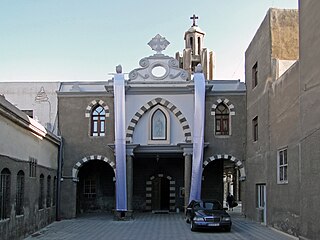
The Syriac Catholic Church is an Eastern Catholic Christian jurisdiction originating in the Levant that uses the West Syriac Rite liturgy and has many practices and rites in common with the Syriac Orthodox Church. Being one of the twenty-three Eastern Catholic Churches, the Syriac Catholic Church is a self-governed sui iuris particular church, while it is in full communion with the Holy See and with the entirety of the Roman Catholic Church.
In South Africa, Asian usually refers to people of South Asian ancestry, more commonly called Indians. They are largely descended from people who migrated to South Africa in the late 19th and early 20th century from British ruled South Asia.

Christianity in Lebanon has a long and continuous history. Biblical Scriptures show that Peter and Paul evangelized the Phoenicians, whom they affiliated to the ancient Patriarchate of Antioch. Christianity spread slowly in Lebanon due to pagans who resisted conversion, but it ultimately spread throughout the country. Even after centuries of Muslim rule, it remains the dominant faith of the Mount Lebanon region and has substantial communities elsewhere.

Lebanese Americans are Americans of Lebanese descent. This includes both those who are native to the United States of America, as well as immigrants from Lebanon.
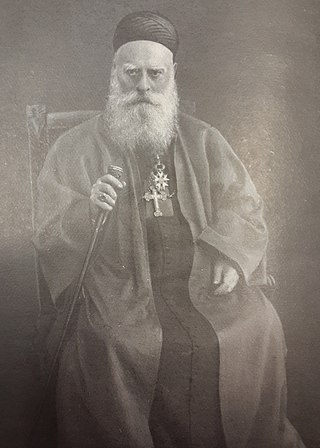
Elias Peter Hoayek was the 72nd Patriarch of Antioch for the Maronites, the largest Catholic community in the Levant, from 1898 to 1931 when he died.
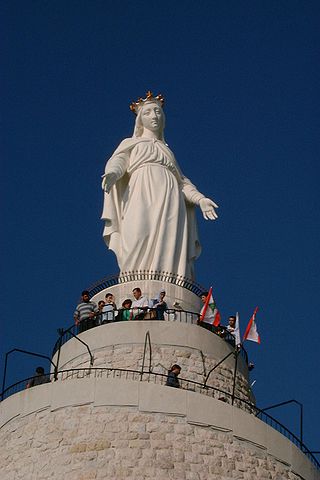
The Shrine of Our Lady of Lebanon is a Marian shrine and a pilgrimage site in the village of Harissa in Lebanon.

Christianity, which originated in the Middle East during the 1st century AD, is a significant minority religion within the region, characterized by the diversity of its beliefs and traditions, compared to Christianity in other parts of the Old World. Christians now make up approximately 5% of the Middle Eastern population, down from 13% in the early 20th century. Cyprus is the only Christian majority country in the Middle East, with Christians forming between 76% and 78% of the country's total population, most of them adhering to Eastern Orthodox Christianity. Lebanon has the second highest proportion of Christians in the Middle East, around 40%, predominantly Maronites. Egypt has the next largest proportion of Christians, at around 10% of its total population. Copts, numbering around 10 million, constitute the single largest Christian community in the Middle East.
Arab Mexicans are Mexican citizens of Arab ethnic lineage, who identify themselves as Arab. Some of Mexico's Arabs are of Lebanese, or Palestinian descent.

The Kreimists, known formally as the Congregation of the Maronite Lebanese Missionaries, is a religious institute of the Maronite Church founded at the monastery of Kreim – Ghosta in 1865 by Youhanna Habib, who would later become Archbishop of Nazareth.
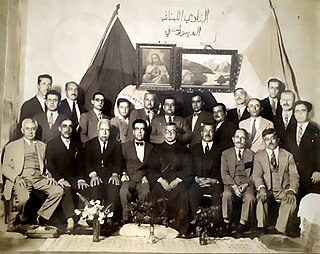
Lebanese Brazilians, are Brazilians of full or partial Lebanese ancestry, including Lebanese-born immigrants to Brazil. According to the Brazilian Institute of Geography and Statistics, they form some of the largest Asian communities in the country, along with other West Asian and East Asian descendants.

Maronites are a Syriac Christian ethnoreligious group native to the Eastern Mediterranean and Levant region of West Asia, whose members traditionally belong to the Maronite Church, with the largest concentration long residing near Mount Lebanon in modern Lebanon. The Maronite Church is an Eastern Catholic sui iuris particular church in full communion with the pope and the rest of the Catholic Church.
Arab Australians refers to Australian citizens or residents with ancestry from the Middle East and North Africa, regardless of their ethnic origins. Many are not ethnically Arab but numerous groups who include Arabs, Kurds, Copts, Assyrians, Berbers and others. The majority are Christian by faith with minorities being Muslim, Druze, Yazidi and other faiths.
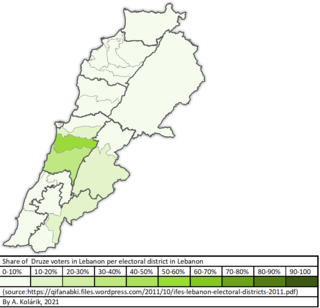
Lebanese Druze are Lebanese people who adhere to the Druze faith, an esoteric Abrahamic religion originating from the Near East, and who self identify as unitarians. They constitute about 5.2 percent of the population of Lebanon.
Maronites in Israel are an ethnoreligious minority who belong to the Maronite Catholic Church, which has historically been tied with Lebanon. They derive their name from the Syriac Saint Maron, whose followers moved to Mount Lebanon from northern Syria, establishing the Maronite Church, most of whose members currently reside in Lebanon. The Maronites in Israel encompass the long-existing Maronite community in Jish, Haifa, and Nazareth areas, as well as the families of former South Lebanon Army members, 7,000 of whom fled South Lebanon in April–May 2000 to Israel. Of these approximately 7,000 migrants, just 2,700 have remained in Israel: over the years, most of them have decided to either return home to Lebanon or to move to Europe or the United States.
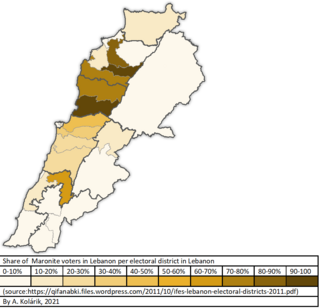
Lebanese Maronite Christians refers to Lebanese people who are members of the Maronite Church in Lebanon, the largest Christian denomination in the country. The Lebanese Maronite population is concentrated mainly in Mount Lebanon and East Beirut. They are believed to constitute about 30% of the total population of Lebanon.
Arabs in Romania are people from Arab countries who live in Romania. The first Fellah settlers came in 1831 - 1833 from Ottoman Syria to Dobruja. They assimilated in the Turkish-Tatarian Population. Some of them came to Romania during the Ceaușescu era, when many Arab students were granted scholarships to study in Romanian universities. Most of them were Lebanese, Syrians, Palestinians, Iraqis, Libyans, Egyptians, and Jordanians. Most of these students returned to their countries of origin, but some remained in Romania starting families here. It is estimated that almost half a million Middle Eastern Arabs studied in Romania during the 1980s. A new wave of Arab immigration started after the Romanian Revolution. Many of the newly arrived Arabs came to Romania in the 1990s in order to develop businesses. In addition, Romania has people from Arab countries who have the status of refugees or illegal immigrants, primarily from North Africa, trying to immigrate to Western Europe. In particular, the European migrant crisis lead to Syrian people coming to Romania, although many Syrians were already living in Romania at the time of the crisis.

Naoum Mokarzel was an influential intellectual and publisher who immigrated to the United States from Mount Lebanon in Ottoman Syria.
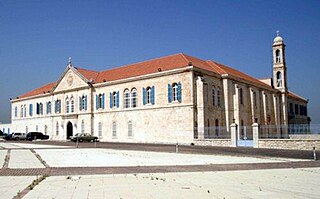
The Maronite Church is an Eastern Catholic sui iuris particular church in full communion with the pope and the worldwide Catholic Church, with self-governance under the Code of Canons of the Eastern Churches. The current head of the Maronite Church is Patriarch Bechara Boutros al-Rahi, who was elected in March 2011 following the resignation of Patriarch Nasrallah Boutros Sfeir. The current seat of the Maronite Patriarchate is in Bkerke, northeast of Beirut, Lebanon. Officially known as the Antiochene Syriac Maronite Church, it is part of Syriac Christianity by liturgy and heritage.
Lebanese Nigerians are Nigerians with Lebanese ancestry, including Lebanese-born immigrants to Nigeria. With a population approximated between 30,000 and 100,000, the group form one of the largest communities originally from outside Nigeria.















